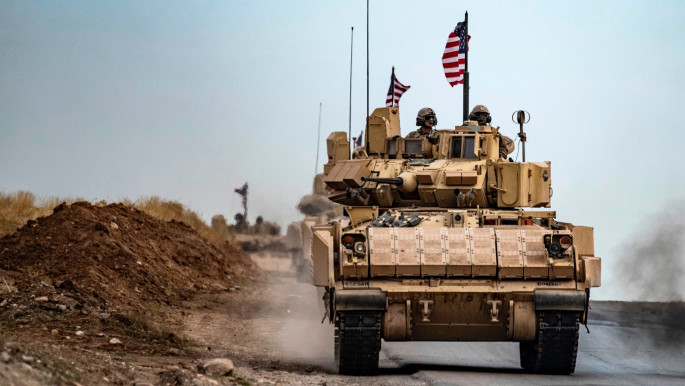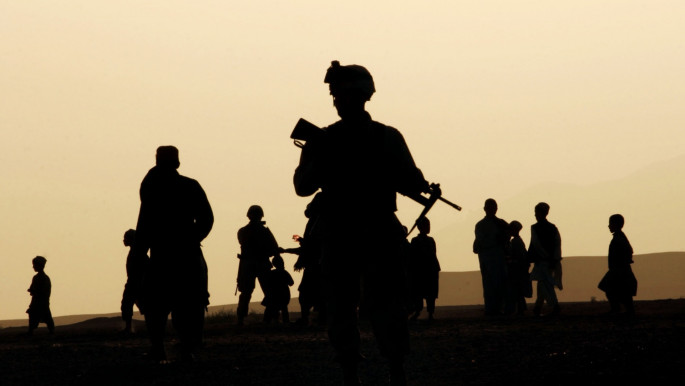Could a NATO 'surrogate force' replace US troops in Iraq?
Since the US-led invasion of Iraq in March 2003, the US has repeatedly pledged to leave, with each instance resulting in broken promises and renegotiations - and in some cases an increase in forces.
America's 2007 and 2011 pledges to leave Iraq resulted in no clear plan, and with the growing threat of the Islamic State (IS), the US increased its forces at the request of the Iraqi government, though again with no clear timetable for withdrawal.
This time, with the Iraqi parliament's decision last year to remove US forces, following the establishment the previous year of NATO-supported institutions, and now with a significant decrease in IS membership (from around 35,000 at its peak, down to around 8,000 today), there appears to be a more coherent plan.
The few remaining US service members (it has not been announced how many, though the 2,500 that remain are said already be in non-combatant advisory roles) will work in a support capacity with the far more numerous NATO forces, increasing from the current 500 to 4,000, putting a more multinational and less combative face on the foreign military presence in Iraq.
 |
America's 2007 and 2011 pledges to leave Iraq resulted in no clear plan, and with the growing threat of IS the US increased its forces at the request of the Iraqi government, with no clear timetable for withdrawal |  |
A new face for foreign forces in Iraq?
"Having a greater European role within the NATO mission rather than just an American face is better for Iraq," Paolo Napolitano, a former senior staff advisor with the NATO mission in Iraq, told The New Arab, noting that the US will remain in Iraq but in a non-combat support capacity. "The expansion of the NATO Mission will serve the Iraqi PM's objective of 'selling' the mission to its supporters with the US reduction."
 |
|
| Read more: As America's 'forever war' ends, Afghanistan's battle is set to continue |
Though the US did announce earlier this month that it would be removing combat forces from Iraq, it did not provide a timetable, nor did it say the number of troops that would remain.
Moreover, a statement last Tuesday by US Central Command General Kenneth Frank McKenzie to members of the House Armed Services Committee cast doubt on America's withdrawal commitment when he said, "I don't see us withdrawing completely from Iraq in the future."
Akeel Abbas, a political analyst and an associate professor at the American University of Iraq – Sulaimani (AUIS), describes the move from US to NATO-led forces as a "relabelling."
He notes that the main political groups have not made major statements on this apparent transition, a possible sign that they don't expect major change. "When a serious decision is made, it will become a public debate issue," he told The New Arab.
Still, he agrees that having a NATO-led coalition could make the forces less of a target. The forces, in this case, are mainly Iraqi, as they are the ones on the frontlines, with the American and NATO forces serving almost exclusively on self-contained bases.
 |
Having a greater European role within the NATO mission rather than just an American face is better for Iraq |  |
From the perspective of those who have fought against the US presence in Iraq, the departure could be seen as a result of attacks on military bases.
"From the propaganda, it was the constant attacks that led to the US troop reduction," says Rasha Al-Aqeedi, senior researcher for Newlines Institute, noting that the withdrawal had already long been agreed upon.
The right time to withdraw?
Regardless of the reason or substance of the transition, the US and NATO appear to be moving forward with the plan for NATO to take charge of security training, which will likely be at bases in Anbar, Baghdad and Erbil.
The NATO mission in Iraq, which was established in 2018, will continue its training of Iraqis at institutions such as the Iraqi Bomb Disposal School, the School of Administration and Logistics, and the Military Medical School. They will also continue to work together in the Global Coalition to Defeat ISIL as well as the UN and EU Advisory Mission in Iraq. The NATO mission will broaden its role within the Ministry of Defence, advising on leadership, governance and policy. Italy will take command from Denmark in 2022.
 |
|
| The Iraq Report: Iran locks in its influence as US plans troop withdrawal |
Napolitano sees this as a relatively good time for the transition, despite recent challenges, such as the assassination last year of top Iranian general Qasem Soleimani, continuous Iranian militia strikes against US targets, and the ongoing coronavirus pandemic. After 18 years of instability, it will never be the perfect time to make the transition.
"Is Iraq ready for this US reduction? Yes and no. They've improved a lot during these years of working with the Global Coalition to defeat ISIL," says Napolitano. "Now it's time to rationalise efforts and improve the organisational aspects of security ministries for example."
 |
Beyond the regional and internal politics is the fact that the US, with its vast network of bases in the Persian Gulf, will never be far from Iraq. Indeed, US drones in the region have the potential to strike targets inside the country |  |
Multiple considerations for a good faith withdrawal
One issue at the centre of the military transition is the humanitarian aid that is delivered to Iraq from non-NATO countries. "If the US withdraws, it will be a cascade of withdrawals of other countries providing aid that are not part of NATO. It will make countries recalibrate their relationships with Iraq," said Abbas Kadhim, resident and senior fellow of the Iraq Initiative at the Atlantic Council. "On the other hand, you don't want the presence of troops that are rejected by the Iraqis."
Iraq is also working in a complex network of neighbouring countries. In addition to its own upcoming elections, it could be also affected by those of Iran and Turkey.
 |
|
| Read more: Can Biden end America's forever wars? |
Beyond the regional and internal politics is the fact that the US, with its vast network of bases in the Persian Gulf, will never be far from Iraq. Indeed, US drones in the region have the potential to strike targets inside the country.
This scenario is not lost on many in Iraq, who have long been sceptical of US promises of a genuine withdrawal and the return of Iraqi sovereignty to Iraq.
"What's most important is the control of the Iraqi airspace," says Kadhim. "It's important to make sure that any aerial activity is highly restricted and approved."
Another important question that has seen little discussion is the role, if any, that will be played by foreign contractors. Though not counted as the military, contractors require security, and in some cases they work in security. Around two months ago, an American contractor died from a heart attack following a strike on the base where he was working, showing the wider reach of the US presence in Iraq.
For now, any concerns over America's withdrawal plans from Iraq remain muted, a possible sign that the transition is still too vague and preliminary to warrant a strong response.
Abbas describes this time as a "warm-up period" for those with vested interests in the US presence in Iraq. He adds, "They don't think this is a real fight yet."





 Follow the Middle East's top stories in English at The New Arab on Google News
Follow the Middle East's top stories in English at The New Arab on Google News


